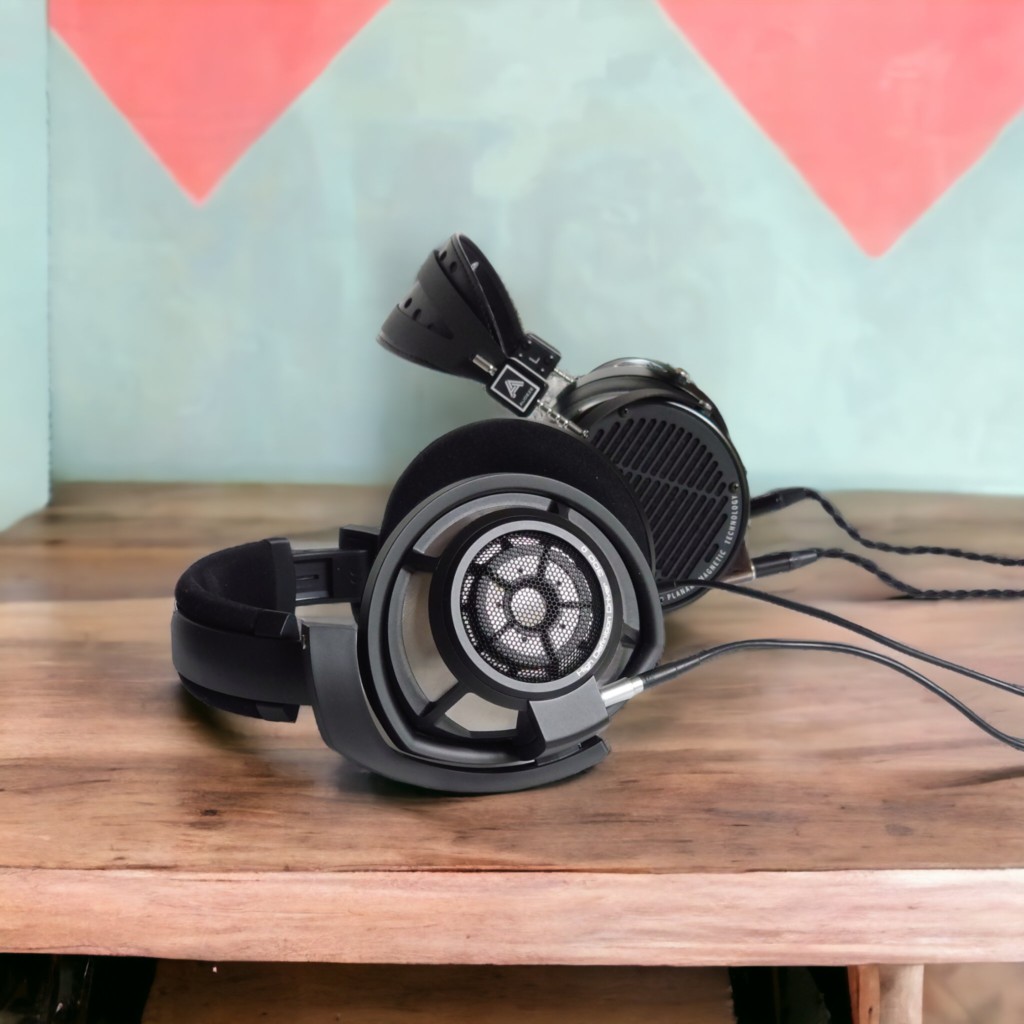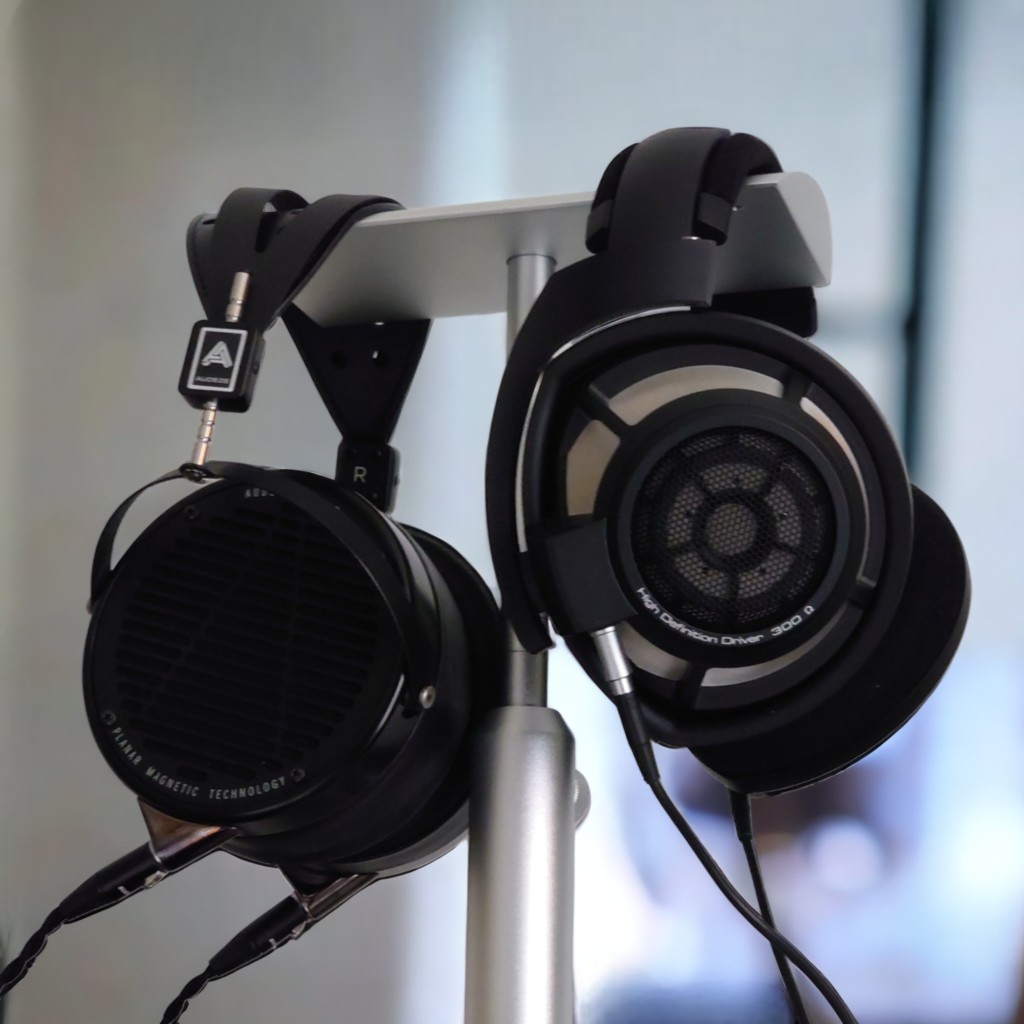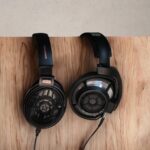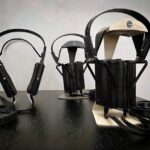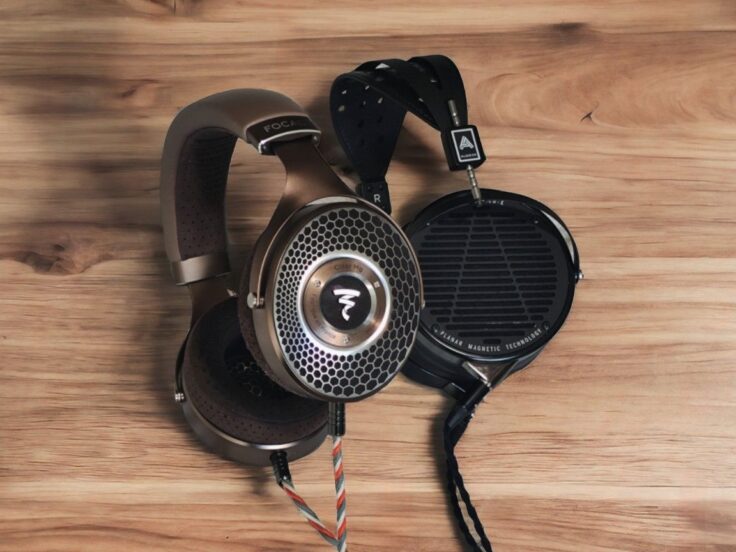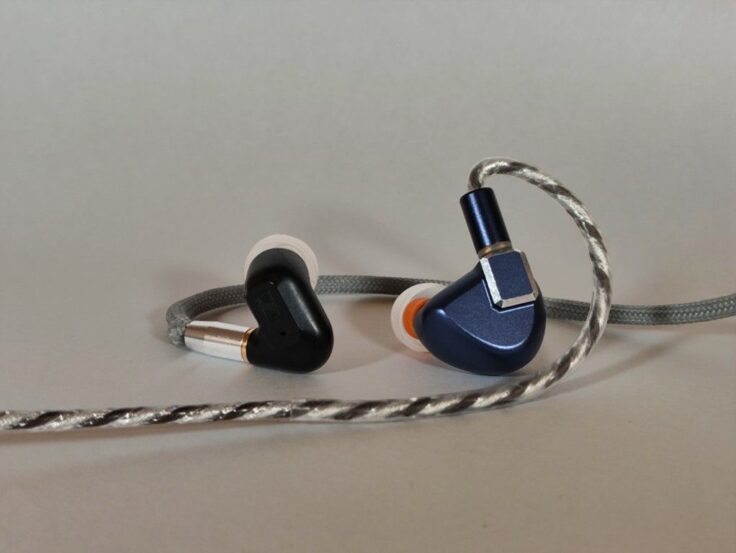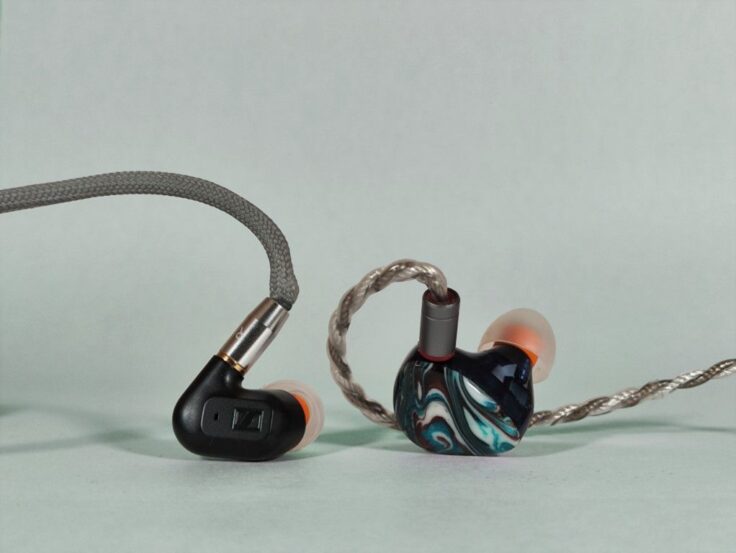The planar magnetic Audeze LCD-X was launched back in 2013 as a low impedance, higher sensitivity option to the LCD-2 and 3. It was aimed at professionals, and it became indeed a successful venture. Audeze made some silent but major changes to the headphones over the years but didn’t release a statement on the details until 2020. The latest version of the LCD-X is often cited as LCD-X 2021. According to Audeze all LCD-X’s produced after late 2020 are the new version.
There has been significant changes to the driver, both the diaphragm and the magnet array. The original version was specified as 22 Ohms and 96 dB @ 1mW, after 2021 the numbers are 20 Ohms and 103 dB. The LCD-X now comes with upgraded pads, a new headband, smaller Fazors (waveguides) and different grills than the original.
The Sennheiser HD800S was launched in 2016 and is the revised version of the HD800, launched in 2009. The HD800 had a completely new design and drivers, created from scratch aiming to be the best dynamic driver headphone in the world. At 300 Ohms it is a high impedance headphone, but quite sensitive at 102 dB@1V.
Although the HD800S an me the LCD-X are headphones of very different construction, they are both popular for use in professional studios as well as in the world of audiophiles. Both deserve a dedicated amplifier, but they’re not the most difficult load on paper. However, the HD800S is notoriously picky on the amplifier matching, whilst the LCD-X is quite easygoing. If you don’t amp the HD800S with a good match, it’s gonna sound bright and anaemic.
This page is supported by users when they donate or use affiliate links to shop for anything on Amazon via our link here .
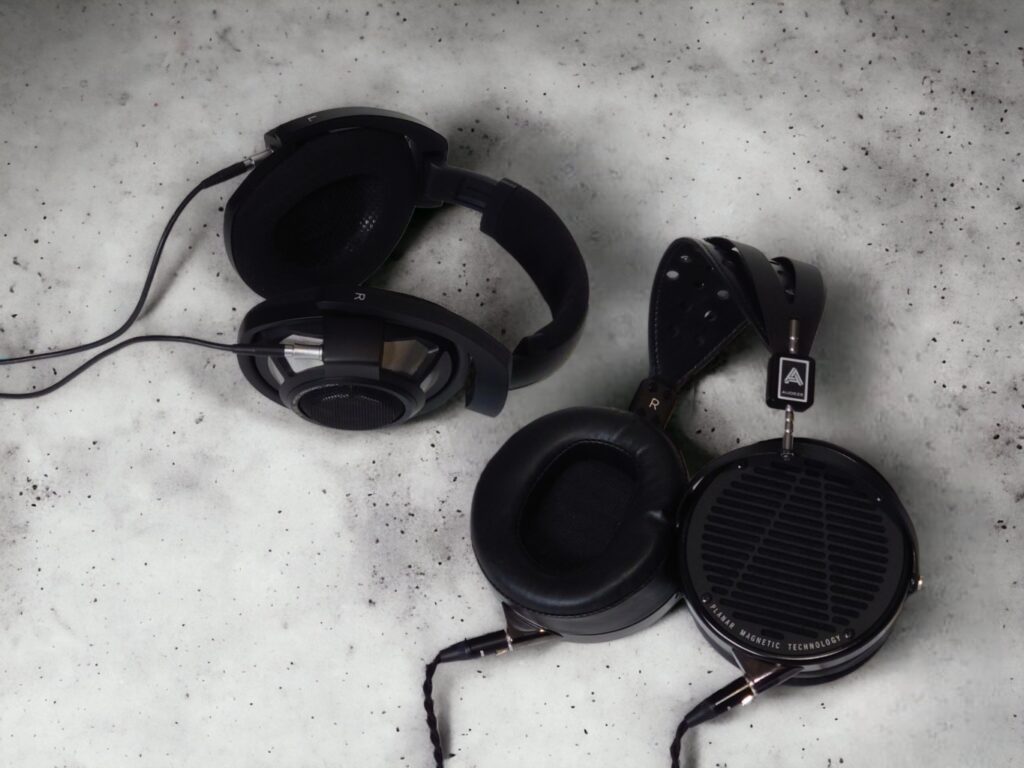
BUILD, COMFORT AND SPECIFICATIONS
The Audeze LCD-X is well-built but big and heavy at 612g. However, the weight is well distributed and it’s quite comfortable. It’s got a detachable 3-pin mini XLR cables.
The HD800S is also well built, although it’s mostly (high quality) plastic. At 330g it’s almost half the weight of the LCD-X. However, it’s more fragile but lighter and much more comfortable to wear.
LCD-X 2021 SPECIFICATIONS
- Style: Over-ear, open-back, wired
- Transducer type: Planar Magnetic
- Magnetic structure: Proprietary magnet array
- Phase management: Fazor™
- Magnet type: Neodymium N50
- Diaphragm type: Ultra-Thin Uniforce™
- Transducer size: 106 mm
- Maximum SPL: >130dB
- Frequency response: 10Hz – 50kHz
- THD: <0.1% @ 100 dB SPL
- Sensitivity: 103 dB/1mW (at Drum Reference Point)
- Impedance: 20 ohms
- Max power handling: 5W RMS
- Min recommended power: > 100mW
- Recommended power level: >250mW
- Cable: 1.9m (6.2ft) length, XLR termination on headphone end with single-ended 1/4″ (6.3mm) TRS jack.
- Wire material: 20 AWG high-purity OCC audio-grade copper
- Weight: 612g
- Made in the USA
SPECIFICATIONS HD800S
- Over-ear, open-back design
- Transducer type: Dynamic driver
- 56mm Ring Radiator dynamic transducer system
- Sensitivity: 102 dB (SPL @ 1 V)
- Impedance: 300 Ω
- Frequency response: 4 Hz – 51,000 Hz
- Total harmonic distortion (THD): < 0.02 % (1 kHz 1 Vrms)
- Magnetic field: 10.5 mT
- Cable connector on headphones: Proprietary 3-pin connectors.
- Cable length 3 m x 2 cables
- 3m cable with 6.35 mm jack plug
- 3m cable with balanced 4.4mm Pentaconn jack plug
- Weight 330 g
- Made in Germany.
ABOUT LISTENING LEVELS
So the thing is that for the Audeze to sound right, you kind of need to play it at medium to higher listening volume. That’s my experience with all Audeze headphones. Low-level listeners typically find Audezes dark and muffled. With the HD800S, on the other hand, it’s impossible (at least for me) to play very loud because the treble is simply too hot and it gets very fatiguing. This results in the bass and mid-range getting a bit recessed, but it sounds overall much clearer with low volume levels.
In my listening comparison sessions I have been playing the headphones at my preferred levels, but not cranked the LCD-X up as much as I could have.
ABOUT EQ
Many listeners enjoy using digital or, occasionally, analogue equalizers. Personally, I rarely use an equalizer. Mainly because I prefer to listen to headphones as is. They were made to sound like they sound, and that’s how they are sold. However, equalizing headphones can do a lot. The treble peak of the HD800S can be softened, the mids can be lifted. You can give the LCD-X extra sparkle up top etc. I am not against it, but it’s not my field of expertise. I prefer finding headphones that sound great as they are, and staying away from those that don’t.
I can mention here that it also is possible to use physical filters to reduce the treble of the HD800S. AKG K141 and K271 foams have done wonders for me. Paper tissue can also work. In this review, however, the HD800S is totally stock and un-modified.
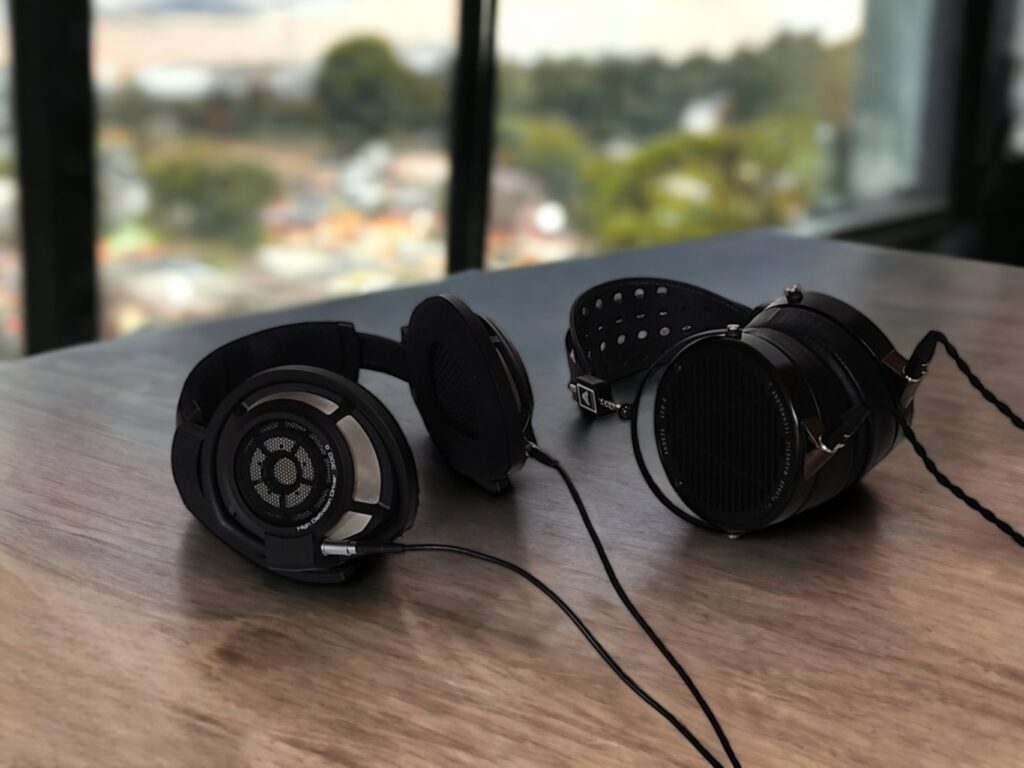
COMPARISONS
BRYSTON BHA-1
This is one of the best solid-state amplifiers I’ve heard with the HD800S. It takes the worst edge off the treble peak and brings more life into it than most amplifiers. It also works great with the LCD-X, which is an easier beast to please.
Angel by Massive Attack
To be honest, I am amazed by how they are not more different than they are. They are different, don’t get me wrong, but not as much as I expected. The HD800S does play good bass with a lot of texture and decent quantity. The soundstage is airy and open.
Moving over to the LCD-X, the bass is a bit richer and denser, and the sound-stage a bit smaller. But I find the imaging capabilities quite good. The Audeze didn’t come out as overly dark, and the HD800S was not overly bright. I’d say the HD800S is lighter and more airy.
Around the Bend by Pearl Jam
Also here, they are surprisingly close. The LCD-X has more punchy bass, the mid-range is a bit fuller, and the treble is more relaxed. However, the soundstage is very good, albeit not as expansive as the HD800S.
It Could Be Sweet by Portishead
The bass is more pronounced and has more body and soul with the LCD-X. Gibbons’ vocals are brighter sounding with the HD800S.
Aubade by Trio 3
Modern jazz. The HD800S feels brighter, the upper mid-range is sharper, and the treble is more energetic. The LCD-X doesn’t seem to lack treble presence, though. I find the HD800S has a lighter, more airy presence. The upper mid-range is more pronounced.
Limit to Your Love by James Blake
The bass is thinner sounding with the HD800S, not with the same foundation. Blake’s vocals are brighter sounding. The soundstage is more airy. However, the LCD-X isn’t dark-sounding or lacking in transparency.
Spring 1 – Vivaldi Recomposed by Max Richter
This sounds delicious on the LCD-X. Spacious with great imaging. The instruments have flesh and bones. The HD800S is even more spacious. It’s also brighter sounding but not too much. I like both presentations.
Rocket by Smashing Pumpkins
This is very satisfying with the LCD-X. The HD800S has a weird mid-range presentation, the vocals kind of evaporate. To the HD800S’ defence, the vocals are recessed on the recording to begin with. The bass is quite ok. There’s nice layering, but a bit of an intense treble.
Scratch Bass by Lamb
The electronic bass is immensely satisfying with the LCD-X. Great imaging, layering and detail too. Moving over to the HD800S, the bass is put back in the mix, the focus is on the upper mids and treble, which isn’t the way it should be.
Skate Park by Wax
This jazz piece sounds quite good with the HD800S, the drums and the bass are quite snappy and punchy. Moving over to the LCD-X, it still feels more right. The music flows more effortlessly and naturally.
Mahler Symphony No. 2 by Paavo Järvi and Frankfurt Radio Symphony Orchestra
Very nice on the LCD-X. Especially the kettledrums in the beginning. However, the HD800S has that extra airy lightness to it which does orchestral music very well, even though the kettledrums are a bit dull in direct comparison. However, the brass instruments get a bit too intense with the HD800S.
Taj by BLR
Electronica. The bass is fabulous with the LCD-X. You can also really crank up the volume. It sounds pretty impressive with the HD800S too. It sure does have some bass skills. However, I cannot crank up the volume without listening fatigue.
Take Five by Helge Lien Trio
Fantastic percussion intro which sounds absolutely superb with the LCD-X. Great imaging, layering and attack. I can play quite loud without fatigue. The HD800S sounds great too, but I cannot keep the volume as high and it loses some of the punch and drive.
AURALIC TAURUS
I repeat the playlist with the Auralic Taurus and basically come to the same results, with the exception that I find that the HD800S might be less fatiguing with the Bryston BHA-1 than with the Taurus. Not a huge difference, though. The Taurus always works great with everything Audeze, so the LCD-X sounds perfect.
HD800S WITH TUBES
Now, many, including me, find the HD800S to be a lot more likable with tubes. I give it some time with the Sparkos Gemini and the Woo WA22 and compare it to the LCD-X. I’ll make it short, but these tube amps make the HD800S more organic and natural sounding, especially in the mids and highs.
WRAPPING IT UP
- Treble: The LCD-X is not in any way a dark-sounding headphone with a recessed treble. I find it very natural sounding with great resolution. The HD800S is very detailed in the treble, but much more intense and (to me, at least) fatiguing. This requires me to set the volume lower and that affects the listening experience. With a good tube amplifier, the HD800S gets more organic and less fatiguing highs, though.
- Midrange: Both have very good midrange detail and resolution. I find the HD800S to sound brighter, the upper midrange more pronounced. Vocals, saxophones, pianos – they sound brighter with the HD800S. Neither has an exaggerated mid-range, both are rather on the polite side in terms of quantity. However, the LCD-X to sounds most natural to me. The Sennheiser can sound more detailed because it gets help from the more pronounced treble, giving it a crisper sound. Again, the tube amplifiers give the HD800S a more organic sound, also in the mid-range.
- Bass: The HD800S does have good bass. It’s textured and deep, it can punch and be visceral. However, the treble often gets too hot, requiring me to lower the volume. This is never a problem with the LCD-X. The Audeze also has a more pronounced and tactile bass to begin with, so it easily wins the bass department for me. It has a good presence and is tight and textured with punch and realism.
- Soundstage: The HD800S has a very open and spacious soundstage with great holography (wide, tall and deep) and excellent imaging i.e. instrument separation and placement. I find the LCD-X to also have great imaging, layering and separation. It’s also very holographic, but it’s not as wide, tall and deep as the HD800S.
- Timbre, sound signature and tonality: I find that the LCD-X has the best timbre across the range. I can really appreciate the HD800S, it’s fascinating and intriguing, but it’s not the most natural-sounding headphones I’ve heard. It’s analytical, spotlighting details and textures in the music. The LCD-X has lots of detail too, but manages to sound more true to life.
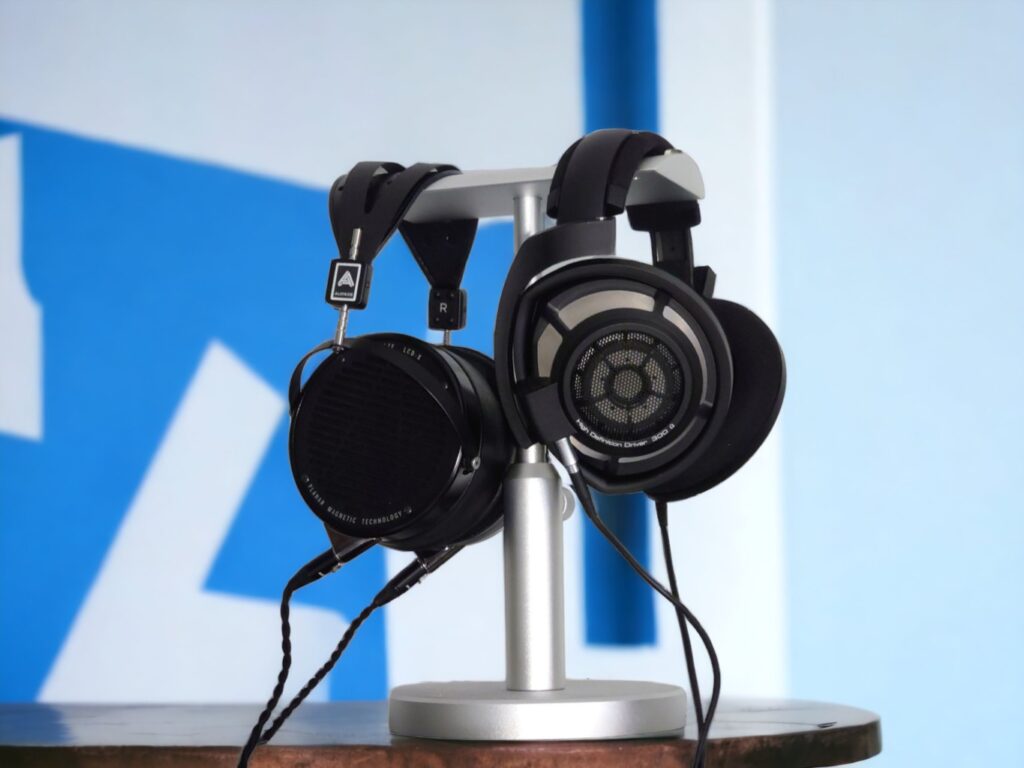
CONCLUSION
With regards to build and comfort, the HD800S is lighter and more comfortable. It has a somewhat fragile plastic construction, while the LCD-X 2021 has a sturdy build with mostly metal components. This results in significantly heavier headphones, albeit with a very comfortable fit.
Sound-wise there are some significant differences. But also some similarities. Neither is especially mid-centric but the HD800S has more mid- to upper midrange intensity. Both have a similar neutral lower-midrange presentation, but HD800S is brighter in the mid-treble region, making it sound brighter overall, along with more treble energy, especially at lower volume levels.
The HD800S has less bass quantity. However, it has good bass extension with a slow, gradual roll-off. The LCD-X is linear down to 40 Hz, then rolls off faster. This isn’t really noticeable with most music, though. The LCD-X 2021 is no bass monster but has more bass presence, slam, and rumble then the HD800S and certainly enough for my preferences.
Both headphones have good treble definition and extension. The HD800S is brighter – again, especially at lower listening levels.
With regards to sound-stage, they are both very good. Both have great imaging and a holographic presentation. The sound-stage of the HD800S is larger, however, and it sounds more airy.
The LCD-X 2021 stands out for its better bass performance and a more musical listening experience. On the other hand, HD800S offers slightly better technical performance (especially at lower volume in levels) and is definitely perceived as brighter, which might not be for everyone. I find that a good tube amp helps.
Concerning my personal preference, it is quite clear. First, I appreciate the HD800S. It is a headphone I can recognize has a lot of things going for it. I certainly enjoy it for many genres and it is definitely better for low-level listening sessions. However, if I had to choose between the two I would not need to think twice. I prefer the LCD-X. Like the HD800S, it is incredibly detailed. In addition, the LCD-X has a tuning I much prefer, as well as being completely free from inducing fatigue. That being said, both are terrific headphones, and have av their strengths and weaknesses.
To try help cover some of our costs, we have started using affiliate links:
You can check out the HD800S on Amazon here, and the LCD-X here.
We make earnings through affiliate links and any purchase you make on Amazon or Linsoul clicking one of our links will give us a small provision at no cost to you.
We only get a provision for items that are not returned, so there’s no incentive for us to recommend something that’s not good.
Linsoul : Headphones, Earbuds, Wireless Earbuds, Desktop DAC/AMP, Portable DAC/AMP, Digital Audio Players,
Amazon: Headphones, IEMs, Headphone Amplifiers, Home Audio or Anything else.
.
